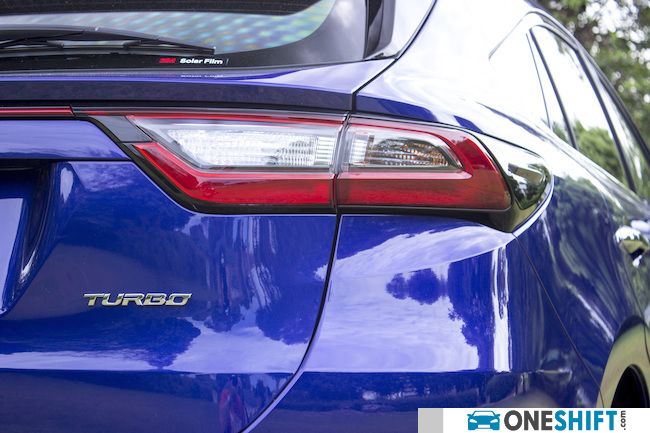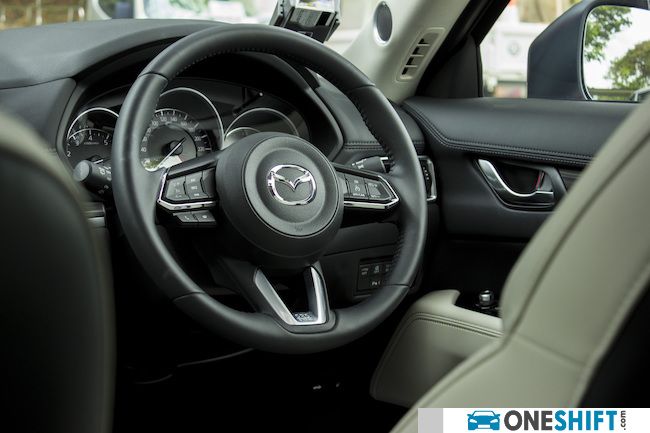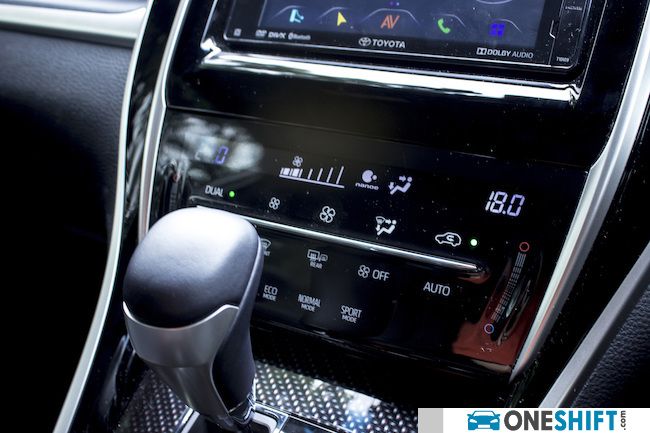Common Ground - Toyota Harrier 2.0 Premium vs Mazda CX-5 2WD Super Luxury
There is no escaping them during your daily commute; the SUV is one of the most common car types you would come across with these days. From small compacts to large luxury models, there seems to be one for everyone. The recent launch of the “Official for Singapore” Toyota Harrier certainly made waves. Already a common sight on Singapore roads, thanks to the many PIs bringing in the car in different trim levels. The official Harrier is powered by a 2.0 turbo charged engine (we are the first country outside of Japan to feature this engine), which addresses the most major issue with the SUV, which is its lack of grunt. Mazda too launched the second generation CX-5 recently. Featuring their now famous SKYACTIV-G technology, where their engines operate at a higher compression, to deliver more power, while a whole host of unseen technological advancements built-in, intended for the optimisation of fuel economy.


There is no escaping them during your daily commute; the SUV is one of the most common car types you would come across with these days. From small compacts to large luxury models, there seems to be one for everyone.
The recent launch of the “Official for Singapore” Toyota Harrier certainly made waves. Already a common sight on Singapore roads, thanks to the many PIs bringing in the car in different trim levels. The official Harrier is powered by a 2.0 turbo charged engine (we are the first country outside of Japan to feature this engine), which addresses the most major issue with the SUV, which is its lack of grunt.

Mazda too launched the second generation CX-5 recently. Featuring their now famous SKYACTIV-G technology, where their engines operate at a higher compression, to deliver more power, while a whole host of unseen technological advancements built-in, intended for the optimisation of fuel economy.

Mazda also now touts the virtues of their G-Vectoring Control technology (which first appeared in the updated Mazda 6). Basically, since most cars are now throttle-by-wire, it is easier to subtly alter throttle inputs (which you cannot feel as you drive), using an array of sensors and electronics. Mazda does this for the purpose of weight transference, for better weight loading to the best wheels, for better driving dynamics. Essentially to occupants, they benefit from a more level and comfortable ride.

The Harrier’s new 2.0 turbo produces a healthy 227bhp, and 350Nm of torque at just 1,650rpm. Power delivery is smooth, and with maximum torque feeding in this low in the rev range, and hence the wait for the turbo spooling up is quite minimal. All of this goes through a six-speed automatic transmission, and drives just front wheels.

Mazda’s 2.5 litre unit delivers a lower 192bhp, and due to its normally aspirated nature, you would experience the build-up of torque building up, and maxing out its 257Nm at 3,250rpm. Like the Harrier, the CX-5 also offers six ratios, driving the front wheels.
The higher torque and power deliver from the turbocharged Toyota 2.0 makes the Harrier quite effortless to drive, and the car shines when accelerating from city to highway speeds.
Mazda’s 2.5 litre unit delivers all this adequately, but you can feel the engine working harder just to do the same job.
The Harrier, while it might be the heavier car here, its force-fed engine gets the car to 100km/h in just 7.3 seconds, versus Mazda’s 8.9 seconds.

Handling-wise, while the Toyota might be quite nimble in weight-transferring its mass around the corners, the Mazda actually does a much better job, and thanks to their G-Vectoring Control technology
Externally, the CX-5’s styling does stand make the car stand out from the pack. Mazda’s current design philosophy of “KODO – Soul of Motion”, features purposeful folds in the sheet metal. Window to body proportion shows up an eye-pleasing 1:2 ratio, giving the car higher shoulders and sleek-looking windows. Carefully placed chrome trim bits of trim around the windows and surrounding that gaping front grille completes the look.

Toyota too has done a good job with its external styling. A split grille, with most of this going to the front bumper visually raises the front end of the car. A few clever tucks and folds integrate things like running lights and fog lamps. Unlike the CX-5’s near parallel to the roofline windows, the Harrier features downward sloping windows which begin to taper downward midway at the rear doors, delivering a sportier stance.

On the inside, the Harrier does show off plenty of black shiny plastic panelling. There are also printed carbon fibre patterns, which does cheapen the look of the car. The infotainment unit feels more aftermarket and like an afterthought compared to the one found in the CX-5. While it is features-laden, it does oddly flip open, with the screen facing upward, to reveal the DVD player. Closing this would prove a challenge, as the upward facing screen now displays the virtual close button, which you are not able to see.

Mazda on the other hand has less clutter, while the infotainment unit sits proud on the top of the dash. Navigation is also much easier, with a neater interface. One major feature we loved in the CX-5 was the built-in BOSE system with 10 speakers, and a bass unit neatly tucked away in the space saver spare.

The Harrier does bring out the best between both the cars when it comes to seat comfort. There is a sense of just slightly more space in the Toyota, especially at the rear. Mazda’s seats do feel more expensive, and are certainly more supportive, but do not offer that lounge-like comfort the Toyota does.

Both cars offer similar boot space, with the Harrier providing 440 litres, and the CX-5 at 442 litres. Both cars also feature flat folding seats, where the Toyota folds them down in 60:40 format, and the CX-5 does this in 40:20:40 fashion. Boot lids for both cars are automated.


The Toyota offers a car which is ideal for cruising, there is less an involving drive with this car. While comfort offered is the better of the two cars, the Harrier does fall short in terms of interior build quality and refinement.


Mazda’s engine might not be as strong in delivering the goods in this case, but how the car has been put together, very importantly, how it handles, the materials used, and yes, the paint quality which Mazda has always been famous for makes the CX-5 a better proposition.
Read the full Harrier article here
Read the full CX-5 article here
Credits:

- Convenient and Hassle-Free
- Consumer Protection
Transparent Process
With No Obligation


Get the Best Price for your used car
from 500+ dealers in 24 hours








